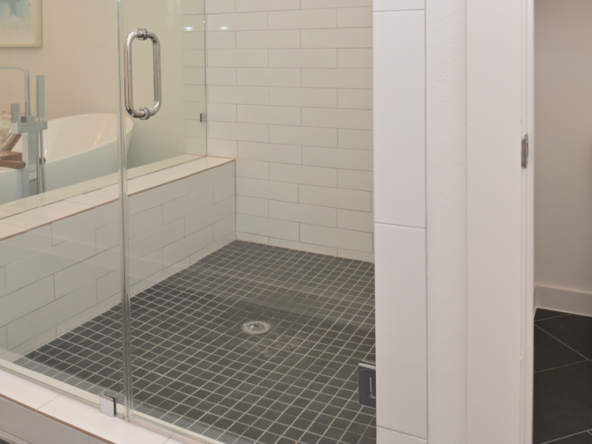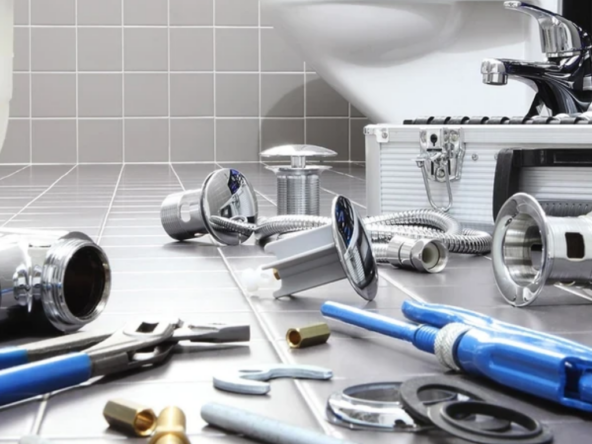Exterior doors are used daily but we do not pay enough attention to cleaning and maintaining them. However, we notice them at first sight before entering a house. It is necessary to keep them clean and maintained and fortunately, there is not enough energy required to keep them functional. With regular inspection and maintenance, you can keep the sliding doors, exterior doors, and garage doors in proper working order.
Guidelines for the Care and Maintenance of Exterior Doors
The exterior doors including entrance, sliding, and garage doors need to have very less amount of adjustment and maintenance throughout the year. The following are some guidelines to maintain them properly.
General Maintenance Guidelines
A proper seal is necessary for preventing water and dust from entering through the exterior doors but the wind-driven rain and dust cannot be stopped in some cases. The weatherstripping around the doors is designed to seal them properly. If you see some light peeking through the doors, try adjusting weather-stripping, the sweeps, and the threshold if they are adjustable enough
For Entrance Doors
- Inspection of all Exterior doors in each fall and spring is necessary for the confirmation of weather-stripping being tightened enough.
- Petroleum Jelly is suggested to be applied to vinyl and rubber weather-stripping to keep the doors from sticking.
- For Squeaky hinges and sticking locks use an aerosol lubricant.
- For minimizing door hinges application of silicone is necessary.
- Scrap wooden doors, jambs, trims, and sealed them if they begin to peel.
- Use elastomeric fillers to fill any cracks.
- Inspecting the transition between the jamb and the threshold every three months is mandatory.
- Check the seal base of the door for rips, tears, and excess wear.
- Tightening the screws on the threshold is essential. When they stick up properly they reduce the damage of the door seal.
- For black residue around door hinges, remove them with magnet behind a cloth or by lightly wiping with a damp cloth or a sponge. The residue is created by fiction when hinges open and close.
For Sliding Doors
- Debris tracks need to be cleaned properly.
- The application of oil at the bottom of the door and the lock mechanism is necessary.
- Silicone lubricant is used for the tracks to take special care of aluminum sliding glass doors.
- Adjustments are required for the threshold if the door is not sliding properly and is difficult to open.
For Garage Doors
The automatic garage door is the largest moving object in the house which is very convenient. Taking safety measures for garage doors is necessary when anyone is operating the door. For the safety of the family and the house, it is critical to make sure the door is in good condition and is operating properly. To provide trouble-free operation with safety, it’s important to maintain and test the door with an automatic opener. Following are some suggested safety rules:
- Keeping the door in full view and free of obstructions while operating is highly important.
- Keep children away from operating the door or the electric door controls.
- While the door is open, make sure not to stand or walk through the way.
For Maintenance of the Door Please Follow These Guidelines
- Inspection of Garage door and openers regularly for the signs of wear and improper alignment checkup is necessary.
- Cables, rollers, and hinges need to be checked every three months to tighten any screws that are loosed.
- Use oil or spray lubricant for all hinges, rollers, and moving parts to reduce noise and add to their life span.
- The only manufacturer can lubricate the chain or screw drives, if used improperly lubricants can cause them to slip.
Instructions
- For the wood garage door, check if the door sticks. If the door is sticking due to uneven alignment, check the hinge screws to make sure that they are tight and are holding properly. If they are tight but the door is still unevenly aligned, it is advised to sand or plane them at the edge where the door sticks. Varnish or paint any area you sand or plane to protect from unwanted moisture. In humid weather climate, wooden exterior doors have to be refinished regularly.
- For metal doors, the addition of the insulating panels for adjusting the garage door changes its weight. To adjust the tension of springs calls a licensed contractor. Remember to lubricate the torsion spring before it loses tension and fails. The appearance of rust on spring is a sign that there is a need for excessive lubrication as previously it was not enough.
Guidelines for Conducting a Balance Test
Test the balance of the garage door twice a year. The test is important because if the door is out of balance, it will strain the opener reducing its life. For conducting a balance test follow these steps.
- Start the test by closing the garage door. Locate the emergency release (a red handle that hangs on the top of the rope) for pulling handle lightly to disconnect the door from the opener for operating it by hand.
- Lift the garage door through the hand by standing in front of the door and pulling it upward. The door should work smoothly with less resistance.
- Do not lift the garage door when it is 4 feet approximately from the ground. It should stay in place when you release hands from the door. Although, a light movement is acceptable. The door is likely to be unbalanced if it does not stay in place. In such a case please call a garage door technician for its adjustments.
- The garage door must be closed by hand. By pulling the handle towards the opener powerhead, reset the emergency release. Pulling on the handle must be reconnected with the garage door to the opener. If the door remains in the position, call a professional to adjust spring tension.
For Cleaning Exterior of the Door
The exterior surface of the door needs to be cleaned periodically to minimize the buildup of dirt and rust-causing particles. Use warm and soapy water to clean the door. Avoid using harsh cleaners to clean garage doors.
Guidelines for Conducting a Force Setting Test
Force setting must be tested monthly. As, when the force setting is too high, it needs a lot of force to close the garage door which damages it a lot that too with any other objects in a way before reversing direction as it should. Do not use a high force setting for an unbalanced garage door. Follow these steps for conducting the Force setting test.
- Push the remote control unit or the wall button for closing the garage door. Before, moving onto the next steps you should be standing near the door to push the button. Use remote control unit instead if the door is not near.
- Apply light and upward pressure on the bottom of the door as it closes. If it does not reverse, the force can be excessive and in need of adjustments.
- Follow the instructions in the garage door owner’s manual to adjust the door’s force setting.
- Repeat steps 1 and 2 after the adjustment of force. The door should readily reverse its direction. If it still fails call a professional for service.
Guidelines for Conducting a Reversal Test
The reverse mechanism of the garage requires testing monthly as it is an important safety feature. On closing garage door comes in contact with a vehicle or other obstruction due to which reverse mechanism causes the door to reverse its direction heading it up instead of continuing down. Follow these steps to conduct a reversal test.
- Open the garage door before conducting a test. 2×4 wood board to be placed flat on the floor at the center of the garage opening. If a 2×4 wood board is not available use an object 11/2 inches high that can withstand contact with a garage door.
- Push the remote control unit or the wall button to close the door.
- Examine how the door closes, when it comes in contact with the board as it should now stop and then reverse the direction. If it does not do so one or more parts are needed to be adjusted.
- Follow the instructions in the garage door owner’s manual to adjust the door’s reversal.
- Repeat steps 1 and 2 after the adjustment of force. The door should readily reverse its direction on contacting the board. If it still fails call a professional for service.
Guidelines to Check Photocells
Photocells must be checked every month. They are located on either side of the garage door with 5 inches away from the floor and they project a beam of light from one to the other. Check, If they work properly:
- One Photocell must have a red indicator light and the other one must have a green one.
If they are not working properly then:
- The red indicator light will be flashing due to the beam of lights not being aligned, the wire can be knocked or the beam can be blocked.
- The beam is broken due to the door being shut automatically causing It to reverse. It is better to hold down the wall button until the door fully closes just to check if this solves the problem.
- Remove all the dirt or objects such as leaves or spider webs from the lens of the photocell. If it does not fix the problem call a qualified professional and refer your garage door owner’s manual for more troubleshooting steps.
Instructions
- Do not do self- repair of the garage door only a qualified professional can do it.
- Do not make adjustments to torsion springs, cables, or button fixtures connecting the cables to the door. Seek professional help.
Checking batteries in the Remote Control Unit
- Checking of batteries in remote control units in a year is mandatory. While replacing the batteries, check terminals for signs of corrosion.



